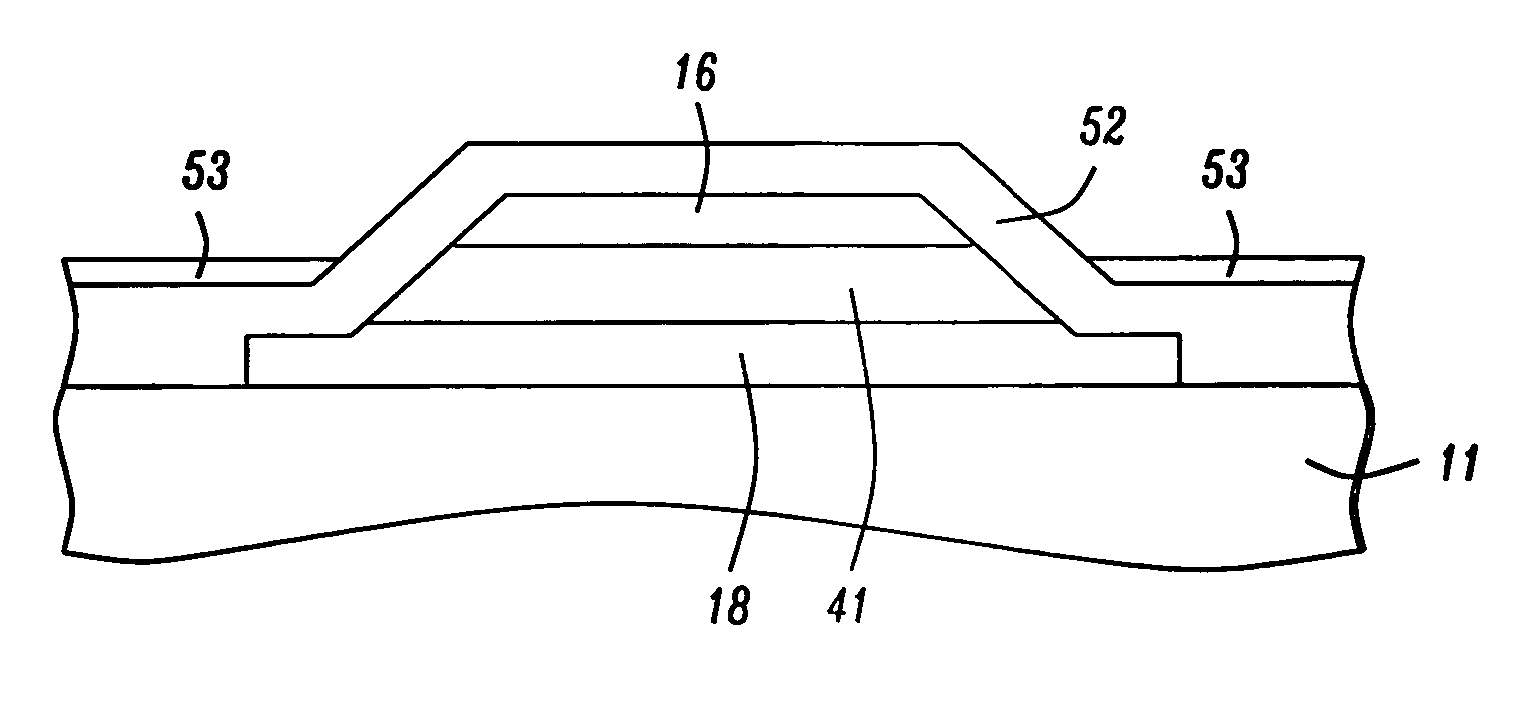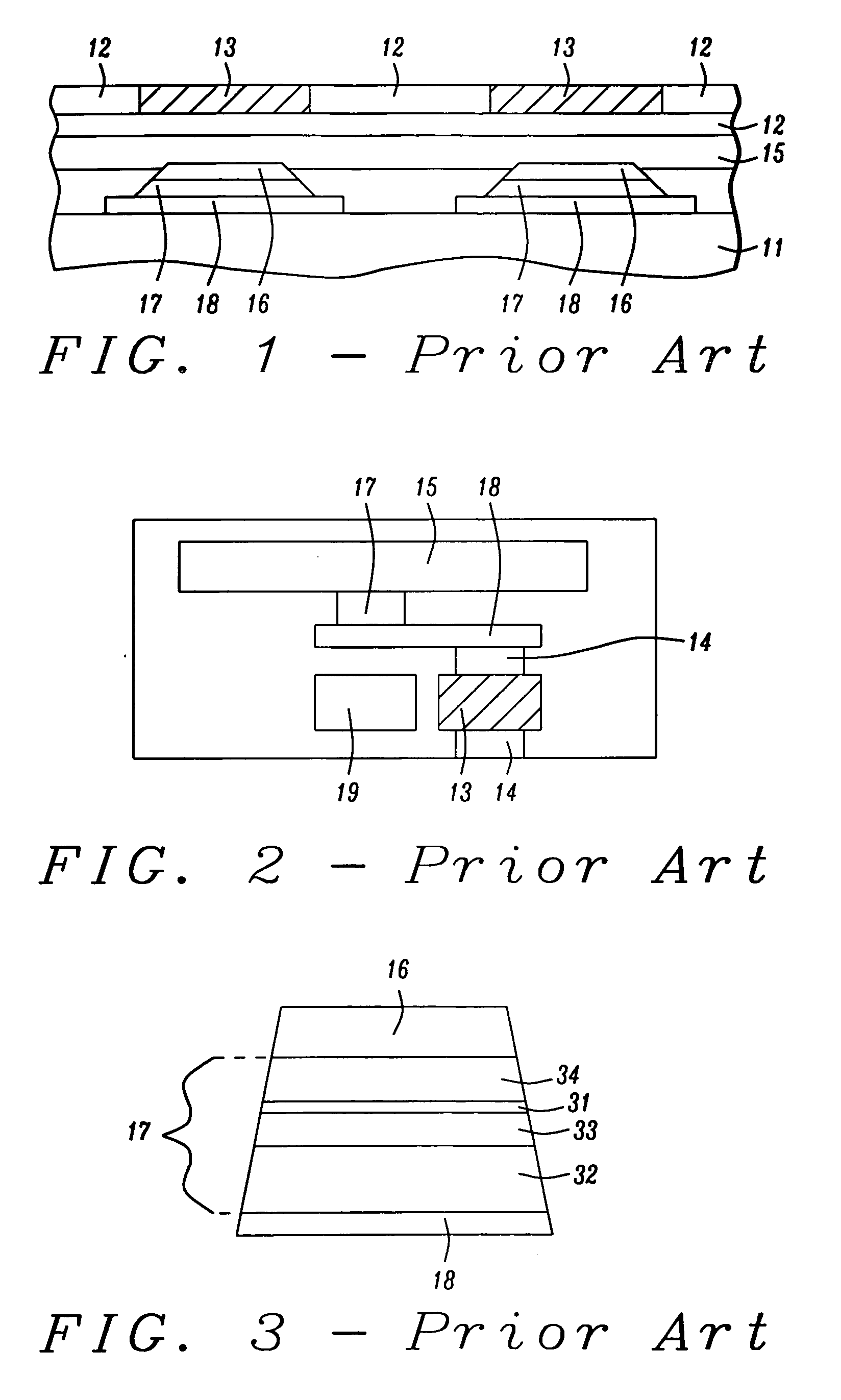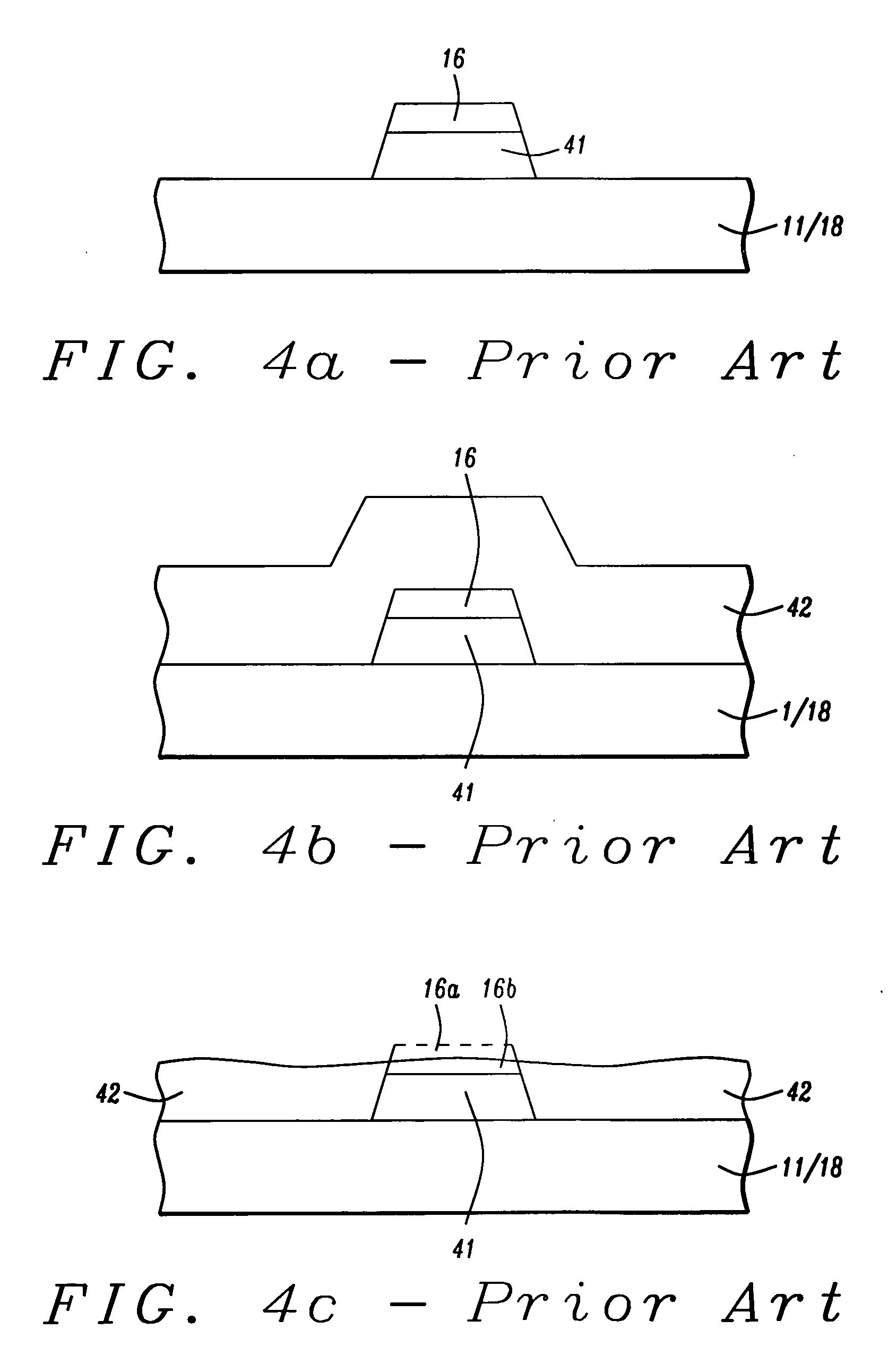Structure and fabrication of an MRAM cell
a technology of mram cells and mtjs, applied in the manufacture/treatment of galvano-magnetic devices, basic electric elements, electric devices, etc., can solve the problems of reducing the efficiency of bit line writing, thinning of oxide around the mtj stack, and increasing the cost of bit line to free layer distan
- Summary
- Abstract
- Description
- Claims
- Application Information
AI Technical Summary
Benefits of technology
Problems solved by technology
Method used
Image
Examples
Embodiment Construction
[0025] As noted earlier, in the prior art the exact stopping point for the CMP in the capping layer cannot be well controlled, varying from device to device and from wafer to wafer. As a result, control of the distance between the bit line and the free layer(s) is poor. Because the strength of the magnetic field generated by the bit line current at the free layer(s) depends strongly on the distance between the bit line and free layer(s), the inability to control this distance translates directly to the inability to control the switching magnetic field at the free layer(s), leading to degradation of device performance.
[0026] The present invention solves this problem through a new process to fabricate the MRAM chips that results in a MRAM cell structure with reduced MTJ shorting and a well controlled distance from bit line to free layers. In this process, a layer of silicon nitride or silicon oxynitride is deposited on the patterned MTJ junctions for extra protection, before the depo...
PUM
 Login to View More
Login to View More Abstract
Description
Claims
Application Information
 Login to View More
Login to View More - R&D
- Intellectual Property
- Life Sciences
- Materials
- Tech Scout
- Unparalleled Data Quality
- Higher Quality Content
- 60% Fewer Hallucinations
Browse by: Latest US Patents, China's latest patents, Technical Efficacy Thesaurus, Application Domain, Technology Topic, Popular Technical Reports.
© 2025 PatSnap. All rights reserved.Legal|Privacy policy|Modern Slavery Act Transparency Statement|Sitemap|About US| Contact US: help@patsnap.com



